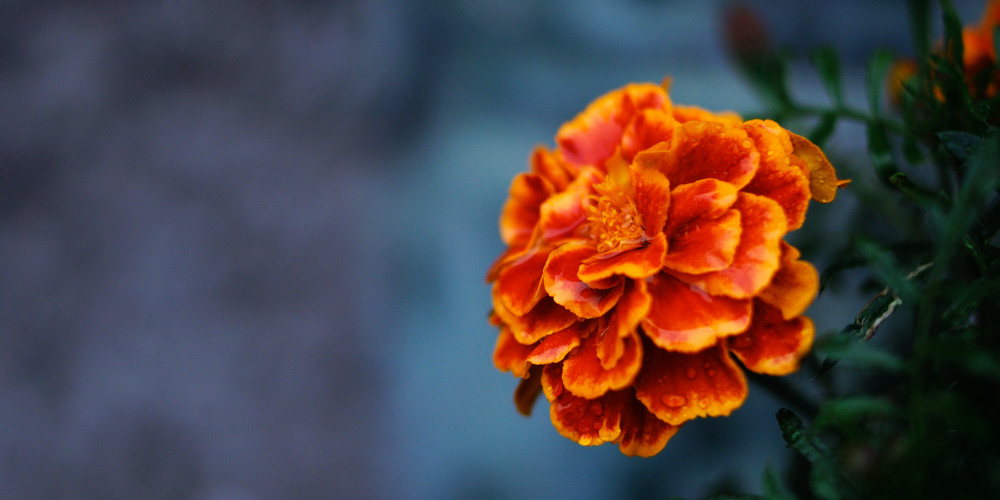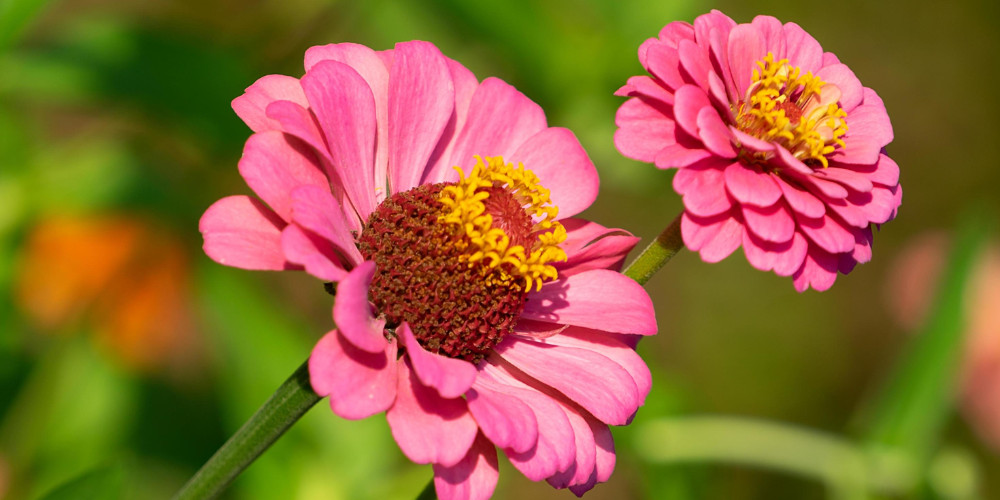It is now possible for everybody who has been waiting for the proper time to grow their favorite floral plants to do so. Because summer is quickly approaching in India. Growing any form of plant requires the right weather conditions. Some plants prefer the milder mild temperature of winter and spring for growth, while others prefer the warm weather and bright direct sunlight hours of summer. Summer flowering plants, in particular, require more sunlight to bloom well.
Flowers are beautiful creations of nature. Certainly, they have the ability to present a cute smile on anyone’s face just by looking at them. Flowers not only feed your soul with their charming beauty but also attracts beneficial insects to your garden and hence indirectly promote the productivity of other plants.
Flowering Plants to Grow this Summer
Sunflower
Sunflowers are well known for their vibrant color and distinctive large flower heads. They grow as both ornamental and agricultural crops worldwide. Sunflowers have large flower heads with a black central part made up of numerous florets. The color of the flower petals varies with the growing varieties but most typically bright yellow.
Sunflowers are one of the perfect summer flowers as they thrive in hot and dry weather conditions. They require the full and bright sun to grow properly. Sunflowers are heliotropic in nature, which means they move their head throughout the day to follow the root of the sun from the east to the west.

How to Grow Sunflower
- Soil type – Planting sunflowers in well-drained and nutrient-rich soil like earth magic potting soil is appreciable. Sandy loams, black soils, and alluvial soils are preferable
- Climatic requirements – Plant the sunflowers in a location where they can receive at least 6-8 hours of full sun. Sunflowers grow best in the full and bright sun of hot summers
- Sowing – Sow the seeds of sunflowers directly in the soil about 1-½ inches deep and 12-15 inches apart
Method of growing – Direct sowing (outdoors)
Sowing time – Mar – April and mid-May-June
Days for germination – 5-10 days
Days of maturation – 80-120 days
- Special care – Tall varieties of sunflower may require support. Provide support to the plants with the help of stakes
- Watering – After sowing the seeds, water the soil deeply. Do not overwater the soil and avoid overhead watering to prevent flower dropping. Always maintain even moisture in the soil, especially during flowering and fruiting stages
- Fertilizing – Sunflowers are heavy feeders. At the time of sowing, add organic compost to the potting soil. At the flowering stage application of organic fertilizers is appreciable to boost flowering.
Marigold
Marigolds are everyone’s favorite for their bright colors and multiple layers of overlapped petals. Flowers are varying in colors including bright yellow, orange, red and maroon. Some of the hybrids can showcase two-toned flowers. Marigolds are the better choice to grow as summer flowers as they can withstand hot summers and drought. Grow marigolds as companion crops with vegetables in your garden to attract pollinators and other beneficial insects. The pungent smell of marigolds has the ability to repel pests in your garden. This special characteristic of them will aid natural pest control.

How to Grow Marigold
- Soil type – Planting marigolds in well-drained and moderately fertile is desirable for their better performance
- Climatic requirements – Marigolds require at least 7-8 hours of full sunshine to bloom better. These summer flowers can withstand the full sun and hot weather of the summer
- Sowing – Marigolds can be easily started by sowing the seeds directly in the well-drained soil outdoors at the depth of 1-1 ½ inches and 12-18 inches apart
Method of growing – Direct sowing (outdoors)
Sowing time – Feb- March, June-July, and Sep-Oct
Days for germination – 5-7 days
Days for maturation – 55-60 days
- Watering – Water the soil regularly till the plants get established. After the good establishment of marigolds, allow the soil to dry somewhat in between two watering. Do not overwater the plants
- Fertilizing – Add some organic fertilizer to the potting soil at the time of planting or at the time of flowering. Do not fertilize marigolds with nitrogen-rich fertilizers at the stage of growth, because this increases foliage growth but not flowers.
Zinnia
Zinnias are the perfect summer flowers to create the quickest color burst in your garden as they grow and flower quickly. These unique and elegant flowers come in different types including single and multi petalled types and various shades of long-lasting colors. Zinnias are easy to grow, hence ideal for beginner gardeners.

How to Grow Zinnia
- Soil type – For planting zinnia, the soil should be well-drained and rich in organic matter. Zinnias are susceptible to root rot, hence the soil should be well-drained
- Climatic requirements – Zinnias require warm weather conditions and a full amount of sunlight at least for 7-8 hours to produce large and beautiful flowers
- Sowing – Zinnia seeds should be sown at ¼ to ½ inches of depth by leaving 6-8 inches of space apart
Method of growing – Direct sowing (outdoors) or transplanting (if sown indoors)
Sowing time – mid-Feb- mid-April
Days for germination – 7-10 days
Days for maturation – 60-70 days
- Watering – Zinnia plants need evenly moist soil but not waterlogged, as waterlogged soil leads to root rot. Regularly water them till the seedlings got established and always maintain the even moisture in the soil at their growing stages
- Fertilizing – Incorporate organic fertilizers into the soil at the flowering stage or after 45-50 days of sowing the seeds.
Cosmos
Cosmos are daisy-like colorful flowers with long slender stems. Cosmos produce flowers in a broad range of colors that bloom throughout the summer months. These summer flowers are the better choice to grow in your vegetable garden to attract pollinators and other beneficial insects. Cosmos are easy to grow and they don’t need much of your attention. These hardy summer flowers can thrive in the hot weather of the summer and the limited supply of nutrients.

How to Grow Cosmos
- Soil type – Planting cosmos in well-drained and fertile soil is considerable. They can thrive even in moderately fertile soil which is not desirable for many flowering plants but make sure the chosen soil is well drained
- Climatic requirements – For the vigorous growth of these summer flowers, choose the location where they can get full sun at least for 7-8 hours
- Sowing – Sow the cosmos seeds directly into the soil about ¼ inches depth and 10-12 inches apart
Method of growing – Direct sowing (outdoors)
Sowing time – March-July
Days for germination – 5-10 days
Days for maturation – 50-60 days
- Special care – Provide support to the taller varieties of cosmos with the help of stakes to prevent them from flopping over
- Watering – Regular watering is essential till the cosmos get established. Once after the establishment, maintain the even moisture in the soil. Cosmos can withstand low moisture in the soil but they don’t like overwatering
- Fertilizing – Application of organic fertilizers once at the flowering stage is enough in the cosmos. Too much fertilizer and frequent fertilizing are not required as these summer flowers can thrive in moderately fertile soil conditions.
Balsam
You might have seen these colorful flowering plants in many nurseries and other garden centers. Balsams are widely grown for their easy growing and pests resistance characteristics. These beautiful summer flowers are known by many names including balsams, impatiens, and rose balsams. Flowers are cup-shaped and available in various colors. They bloom better when they are grown from summer till spring.
How to Grow Balsam

- Soil type – Balsams require fertile and well-drained soil to grow. They don’t grow well in soggy soil
- Climatic requirements – Balsams prefer warmer climates and humid weather. They grow well in the full sun and partial shade area. Plant the balsam plants in a place where they can get full sun at least for 7-8 hours
- Sowing – Sow the balsam seeds directly into the well-drained soil at the depth of ¼-1 inches and 8-12 inches apart
Method of growing – Direct sowing (outdoors) or transplanting (if sown indoors)
Sowing time – Feb-March-and May-July
Days for germination – 5-7 days
Days for maturation – 60-70 days
- Watering – Balsams prefer evenly moist soil throughout their growing season. Usually, they stop flowering if they don’t get water, so regular watering is essential. Avoid overwatering to prevent waterlogging in the soil
- Fertilizing – Add some organic compost into the potting soil at the time of planting of balsams. Fertilizing the balsam plants after 45-50 days of sowing is appreciable.











